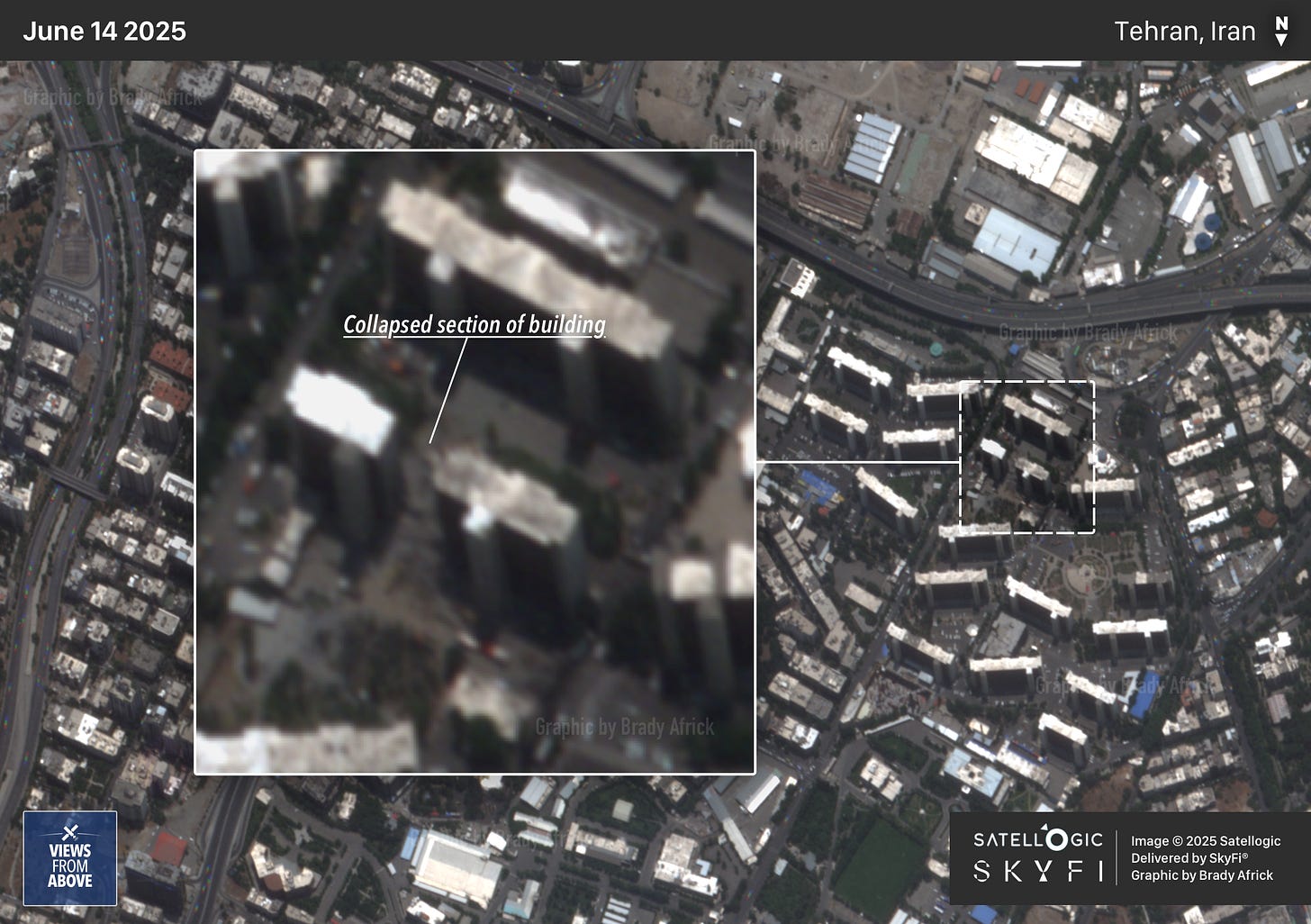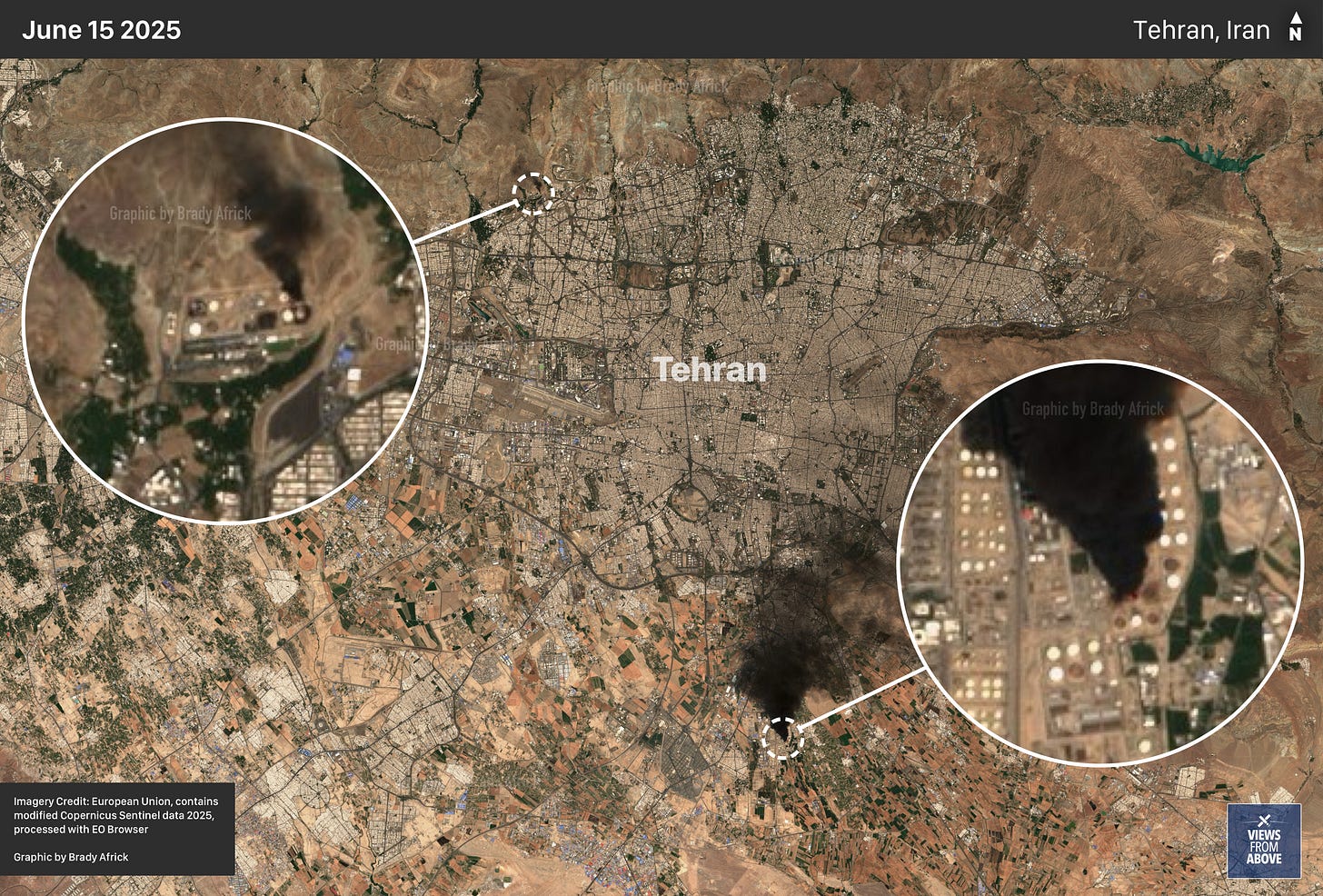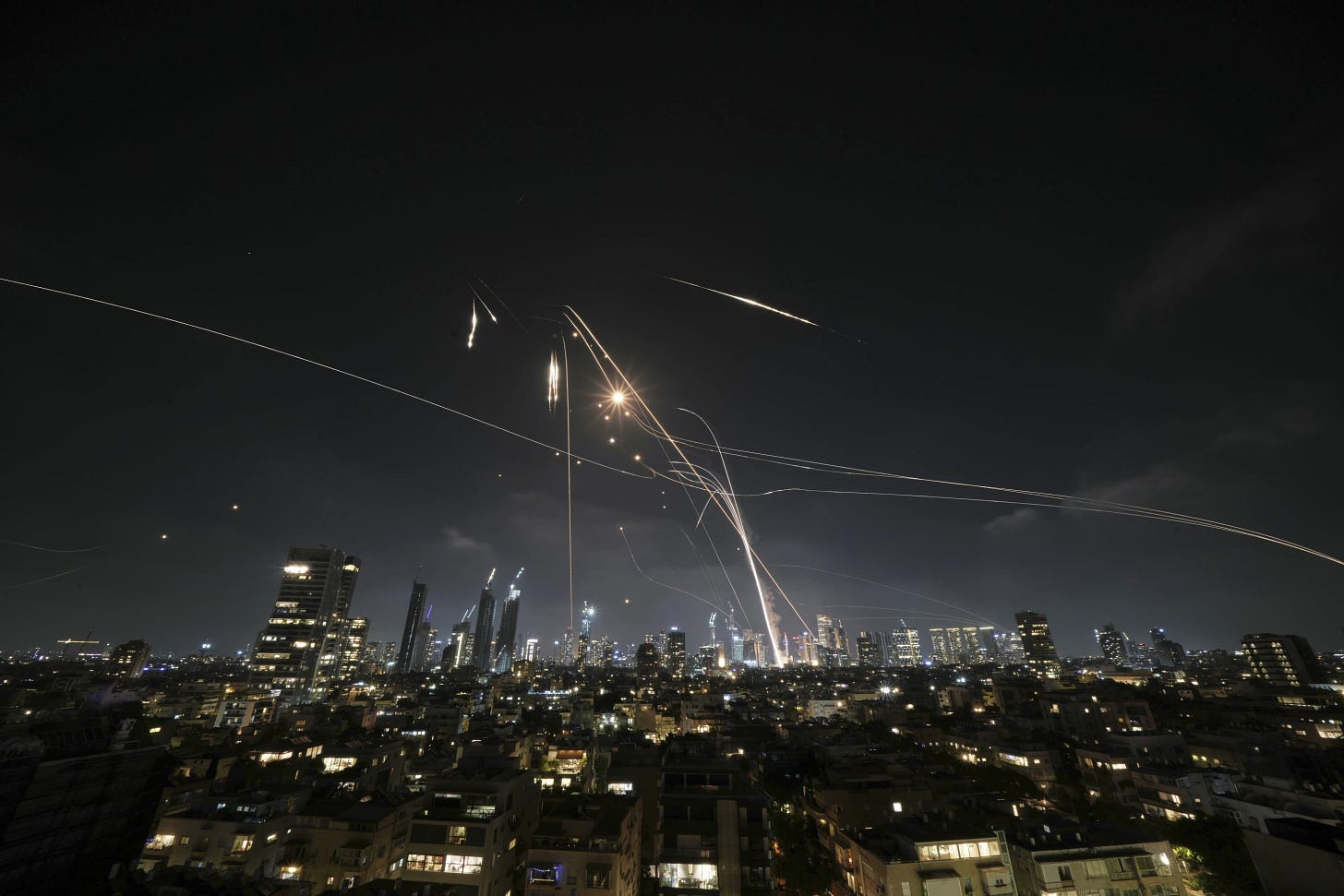Israel strikes Iran's military bases and nuclear sites
Israel struck targets across Iran on Friday, prompting retaliatory attacks from Tehran
Welcome to Views From Above, a newsletter bringing you satellite imagery snapshots of major world events. Today, we are taking a look at the aftermath of Israel’s strikes on Iran.

In the early morning hours of June 13th, Israel launched strikes on Iran with the stated aim of eliminating Tehran’s nuclear program. The operation’s opening strikes targeted key Iranian military personnel, bases, nuclear scientists, and enrichment facilities. Satellite imagery reveals the impact of these attacks, which eliminated some of Iran’s highest-ranking military officials. Tehran has since responded with salvos of ballistic missiles and drones, while Israel continues hitting targets across Iran.
The satellite image above shows damage to Tabriz Air Base in northwestern Iran after it was struck by Israel. The attack cratered taxiways used by fighter jets at the base, hindering Iran’s capacity to respond to Israel’s array of strikes. Scenarios like this one played out across Iran on Friday, with Israel targeting Iranian missiles, radars, and aircraft or otherwise hindering Tehran’s ability to use them.

In targeting top Iranian military personnel, Israel struck residences and military facilities in Tehran. One such strike collapsed a section of a building, seen above, while others caused far more limited damage. After several successful targeted assassinations by Israel, among other strikes, videos emerged on social media of long lines of cars departing Tehran.
Nuclear sites were targeted as well, such as the Isfahan and Natanz enrichment facilities shown in the imagery released by Maxar below. Iran’s most well-protected facilities, like the Fordow uranium enrichment site built deep underground, have yet to be destroyed.

Attacks also expanded to oil infrastructure, with Iran hitting a refinery in Haifa and Israel responding with strikes on Iranian facilities. The satellite image below shows two fuel depots on the outer edges of Tehran burning after Israel struck them. Iran’s state media also reported an Israeli drone targeting the South Pars gas field, the world’s largest, resulting in a halt in operations.

Since launching its operation on Friday, Israel has fought to counter retaliatory drones and missiles fired directly by Iran and Tehran’s proxies, like the Houthis in Yemen. Israeli officials have reportedly urged the U.S. to join operations, but American participation has so far remained limited to shooting down Iranian missiles headed for Israel and providing intelligence.

Thanks for reading Views From Above. Subscribe for free to get satellite imagery and news delivered to your inbox. Already subscribed? Share this newsletter with a friend.


